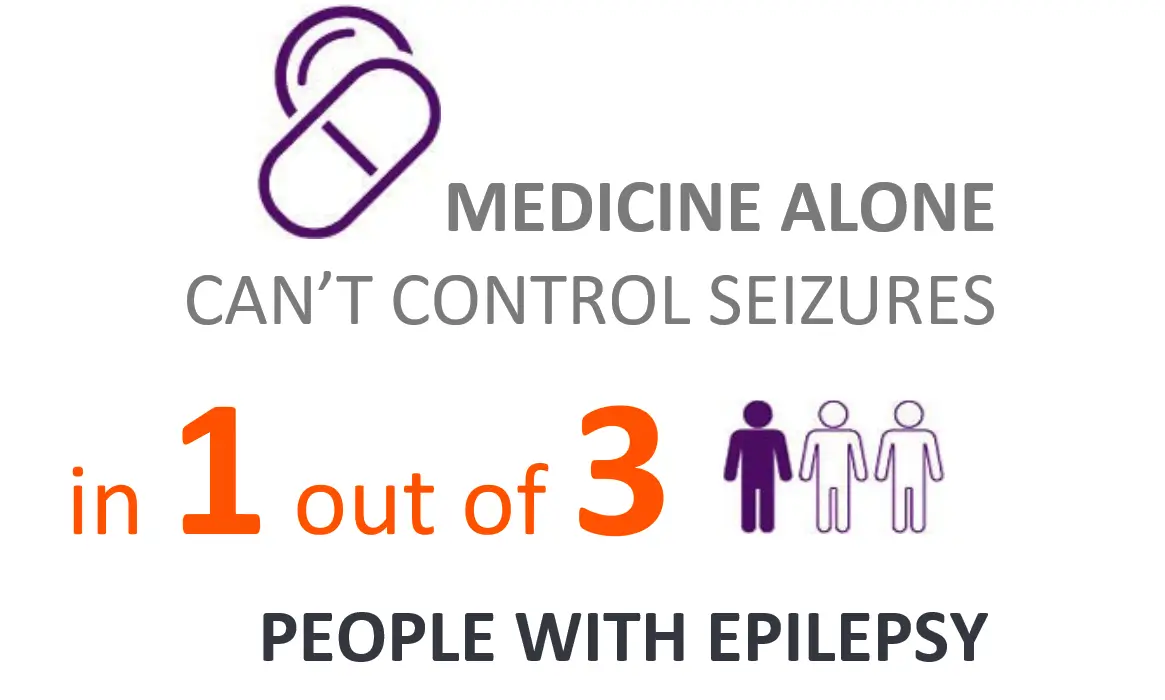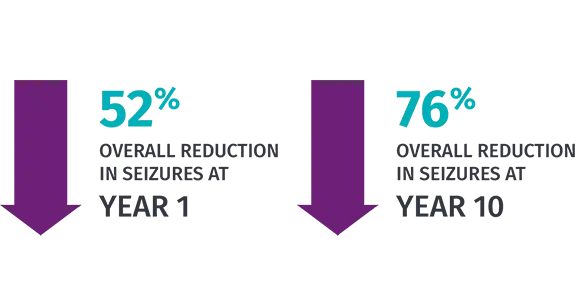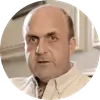What is VNS Therapy™ and how does it work?
VNS Therapy™ is an add-on treatment designed for people with drug-resistant epilepsy whose epileptic disorder is dominated by partial or generalized seizures.
VNS Therapy can lead to fewer seizures, shorter seizures and better recovery after seizures.


Drug-Resistant Epilepsy
Medication alone isn’t the answer for 1/3 of people having seizures. If seizures continue after two anti-seizure medications have been tried for an appropriate amount of time as determined by a doctor, it is considered to be drug-resistant epilepsy.
Studies have shown that adding more medications is not likely to control this kind of epilepsy. But despite this data and what we know about the risks of living with drug-resistant epilepsy, many people continue to be prescribed multiple medications instead of being evaluated for non-drug therapy options.
If you’ve tried multiple medications yet continue to have seizures, it may be time to consider alternative treatment options.
VNS Therapy™ for Drug-Resistant Epilepsy
VNS Therapy is a neuromodulation treatment designed for people with drug-resistant epilepsy. It is recommended by guidelines as an add-on therapy in reducing seizure frequency in children and adults with drug-resistant epilepsy who are not suitable for resective surgery.
VNS Therapy is a small device that is implanted under the skin in the chest and connected to the vagus nerve in the neck. VNS Therapy delivers mild pulses to the brain through the vagus nerve to help prevent seizures before they start and help stop them if they do.
VNS Therapy™ has been shown to reduce the impact of seizures
Benefits of VNS Therapy™
Designed for more seizure-free moments, VNS Therapy can help to not only reduce the number of seizures - it may also reduce the length and severity of seizures that do occur and improve post-seizure recovery.
In studies that compared the effects before and after being treated with VNS Therapy, people experienced:

Fewer Hospital and ER Visits

Improved Alertness, Mood and Memory

Improved Quality of Life

Fewer Seizures

Improved Post-Seizure Recovery

Less Severe Seizures

Shorter Seizures
Could you benefit from VNS Therapy™?
VNS Therapy is recommended by guidelines as an add-on therapy in reducing seizure frequency in children and adults with DRE who are not suitable for resective surgery.
More Seizure-Free Moments
VNS Therapy™ has been shown to improve over time to help control seizures for years to come.
In a 10-year study of 65 patients that tracked the effectiveness of VNS Therapy at reducing the frequency of seizures:

Percentages stated were the mean reduction in seizures.

"I'm now living the life that I never lived before."
Gary, VNS Therapy patient since 2004.
How does VNS Therapy™ work?
VNS Therapy is delivered through a device that sends mild pulses to the vagus nerve at regular intervals throughout the day in an effort to prevent seizures.
An additional dose of therapy may stop or shorten your seizure, decrease its intensity and improve your recovery after a seizure.
VNS Therapy includes a short outpatient procedure, which is not brain surgery.
VNS Therapy™ Delivers Stimulation in 3 Ways

AutoStim Mode*
Responds to rapid increases in heart rate*
An extra dose of therapy is automatically delivered at the sign of a rapid increase in heart rate, which may be associated with seizures.
*Only available in Models 106, 1000 and 1000-D

Magnet Mode
Delivers On-Demand Treatment
Stimulation is manually delivered by swiping the included VNS Therapy Magnet over the generator to help stop or shorten a seizure once it starts

Normal Mode
Helps Prevent Seizures
Stimulation is delivered at regular intervals all day, every day, to help prevent seizures.
Optional features available in Models 1000 and 1000-D only
Treatment customization with the latest VNS Therapy™ technology

Scheduled Programming
Scheduled Programming allows your doctor to pre-program your VNS Therapy™ device to automatically increase therapy settings at intervals they choose.
This option can reduce the need for attending follow up appointments for programming, giving you time back to live your life.

Day & Night Programming
Your doctor can customize your VNS Therapy™ treatment based on your lifestyle preferences or side effect management by programming your device to different settings for any two periods of time during a 24-hour period.
Could VNS Therapy™ be right for you or your loved one?
Find out moreVNS Therapy™ Safety Profile
The most common side effects of VNS Therapy™ include:
Hoarseness
Shortness of breath
Sore throat
Coughing
These side effects generally only occur during stimulation and usually decrease over time. The most common side effect of the surgical procedure is infection.
Talk to your physician about warnings, precautions, side effects, and hazards. Ask about risks that you should know about as well as any other issues that might be appropriate to discuss, such as status epilepticus and sudden unexpected death in epilepsy. You can find more safety information here.
References are available upon request.
The intended audience for this website is visitors in Canada. VNS Therapy™ for Drug Resistant Epilepsy is not available in all countries, please talk to your doctor.
